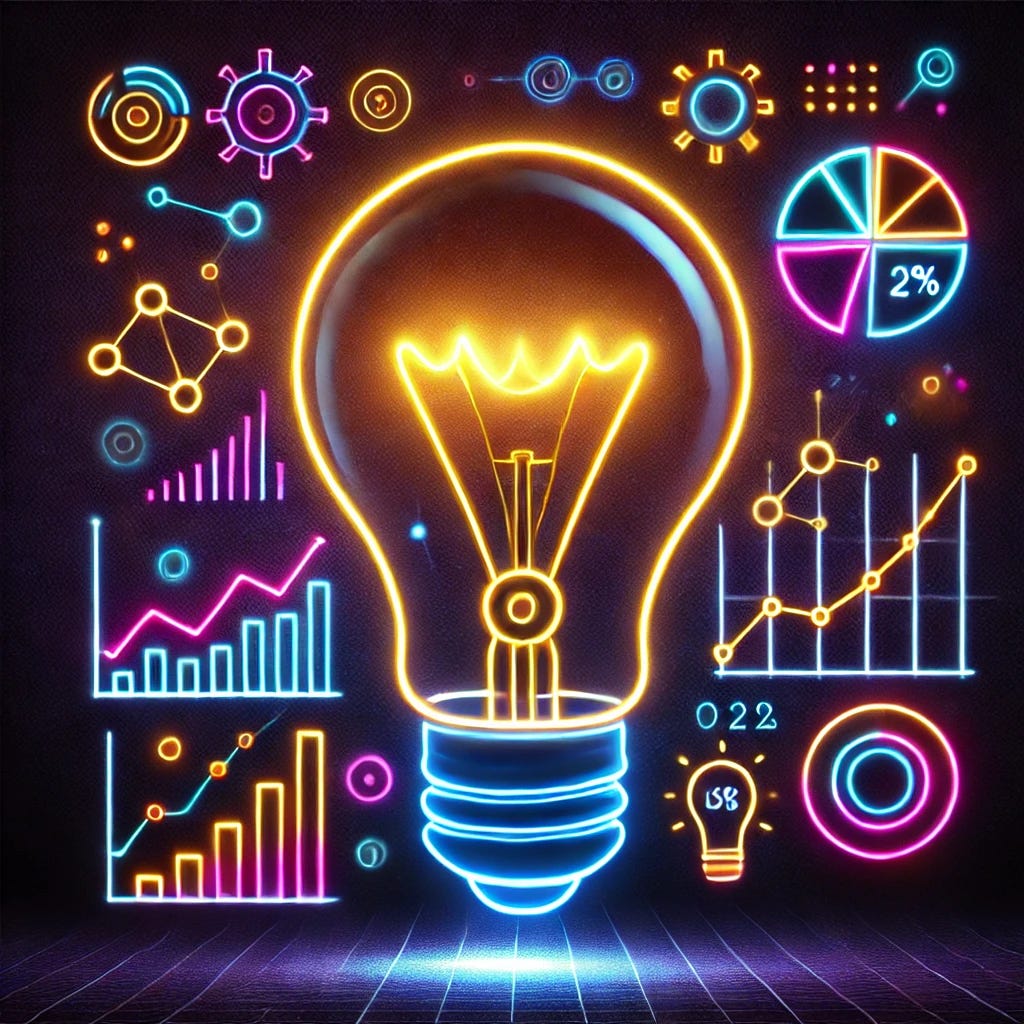Let's get [Data] Lit.
In our data-driven world, data literacy is synonymous to critical thinking.
I always thought that data literacy was reserved for the most technical people. The AI researchers and computer engineers who were making these incredible machine learning models. I believed in this so much that, in my pursuit of data literacy, I joined a Masters in Data Science, so I too can get this elite knowledge.
For my first final in an intro Data Science course, we were asked to build a simple social media algorithm. And as I was coding this model, feeling like a brown woman Mark Zuckerberg in his early days, it dawned on me that Facebook and Instagram are simple pattern recognition models. Generative AI are complex language pattern models that find patterns among gigantic datasets.
We live in a data-driven world.
Almost every choice we make is now guided by data - from the clothes we buy to who we date to the jobs we apply for are all influenced by algorithms. Algorithms that are recommending our life choices. And yet only 30% of Americans can recognize all forms of algorithms. And just 21 percent of the global workforce are fully confident in their data literacy skills. If data and AI are influencing every aspect of our lives, then data literacy can no longer only be reserved for computer scientists or AI researchers; every person must have a foundation of data literacy to navigate today’s world. So let’s begin today.
What are Algorithms?
Algorithms are a set of rules that computers follow to solve problems. Typically, our data is turned into a format that these algorithms can process to uncover patterns or make predictions.
For example, recommendation algorithms use data like your likes, dislikes, and how long you engage with certain content to predict and suggest what you might enjoy next.
What is Machine Learning?
Machine learning uses data and algorithms to uncover patterns or predict outcomes. Machine learning is unique because these models “learn” from the data. It improves itself over time without needing to specifically be reprogrammed for new scenarios. These models take current and past datasets to analyze patterns and learn how the world might work.
For example, think about dating apps. The app “learns” from your profile, who you’ve liked/disliked, who you’ve messaged or ignored, and other actions you take on the app. It then uses that information to “predict” your preferences and make match recommendations. Companies use these learnings to decide which matches to show you for free vs. which ones to gate keep so that you pay for their subscriptions.
What is AI?
AI stands for Artificial Intelligence and refers to computer systems doing “human-like tasks” - think writing, reading, recommending, even recognizing faces and voices. Today, AI is machine learning, a data science method that allows computer systems to identify patterns in data and make decisions. It’s very important to note that although AI may seem like they have human-like intelligence, they don’t. AI are advanced pattern matching tools, and the patterns they’re recognizing are human language and actions.
For example, think about the English language; it follows a specific pattern, “subject-verb-object.” For instance, “I hike a mountain”. When we use Generative AI, like ChatGPT, the models base its response on this pattern. It doesn’t know or understand the MEANING behind the words, but it has “learned” the patterns of the English structure by analyzing large amounts of text data over the years.
We have our foundation. Now what?
Data literacy is critical thinking in our data-driven world.
So, just like critical thinking, it’s about noticing where data shows up in your life and making sense of it.
Here are three ways to easily exercise your data literacy muscles:
Get curious. Notice the places in which you’re interacting with data or your data is being collected. I invite you to spend one day and note down every interaction you have with data (either you’re using it, or your data is being collected). Where do you notice data influencing your actions or decisions? Comment or DM your list in this Substack! I’ll share mine as well. :)
Play with AI tools. This is a great way to get a sense of the patterns and algorithms behind these technologies. I enjoy asking the same question in different models (like Gemini and ChatGPT) to get a better feel for how each one works.
Be imaginative. These tools and algorithms are supposed to be designed FOR US. Imagine what would make your life easier, better and more fulfilled, with and without all this data and technology. I believe this will allow us to be intentional with the technologies we use in a way that makes our life better.
Not everyone needs to feel like a brown woman Mark Zuckerberg to learn data literacy. That’s gatekeeping the most valuable and crucial skill in today’s world. We all deserve, and in my belief should have the right, to understand the most influential technologies in our lifetime. So let’s get data literate y’all.
—
What I’m reading/listening/exploring: Filterworld: How Algorithms Flattened Culture





Sanjana, this is a very well-written and very important post. This past week I had lunch with several faculty of a small liberal arts college. The topic of discussion "AI literacy" for both college professors and students. It was a fascinating discussion that I will tell you more about later, but as I reach back out to them (via LinkedIn and other channels) would you mind if I shared links to your writing?